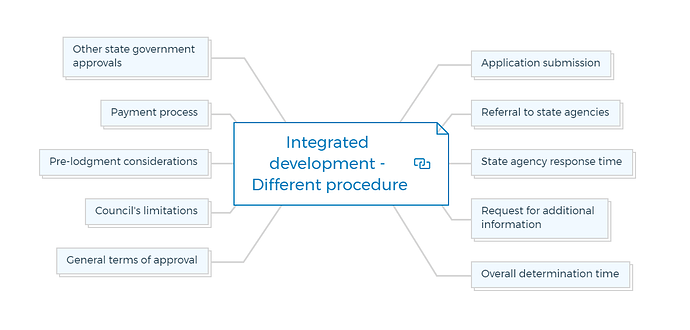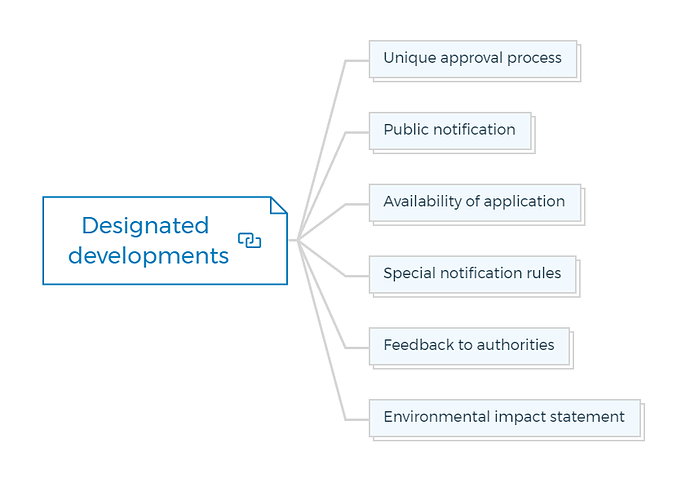1. Deciding approval pathway
Determine the appropriate approval pathway for your project
1.1. Exempt development
First, check if your project can go on the “exempt development” path. If it can, you might not need formal approval. But don’t forget to look at your local rules just in case.
1.2. Complying development
If your project fits the “complying development” criteria, you can take a faster path. You’ll need to apply for a complying development certificate, which is like a shortcut.
1.3. Development application (Local development)
If your project doesn’t fit the exempt or complying categories, you’ll have to take the “local development” path. To get started, gather all the documents and information you’ll need for your application.
1.4. Development applications (Regional development)
For projects under regional development rules, there’s a specific path to follow. Make sure you read and stick to the guidelines for your region. Also, get everything ready that you’ll need to submit.
1.5. Development application (Designated development)
If your project is called “designated development,” be ready for more rules and scrutiny. Collect all the paperwork you’ll need and follow the process carefully.
1.6. State significant development
For projects that are “state significant,” things get even more complicated. You’ll have to learn about state-level rules and gather all the right documents.
Learn More
2. Preparing information required for a development application
- Create a checklist of all required documents and information specific to your chosen approval pathway.
- Prepare detailed site plans, architectural drawings, and any supporting reports or studies.
- Confirm that all documentation complies with local regulations and standards.
3. Lodgement
- Complete all necessary application forms accurately and legibly.
- Assemble the complete application package, including all required documents.
- Organize the application package in the specified format.
You are missing out if you haven’t yet subscribed to our YouTube channel.
4. Fees
- Calculate the application fees based on the type and scale of your development.
- Pay the required fees according to the accepted payment methods.
- Keep proof of payment for your records.
5. Assessment
- Await notification of the start of the application assessment process.
- Respond promptly to any requests for additional information or clarification.
- Cooperate with any site inspections or investigations as requested by the authority.
6. Time to determine
Be aware of the expected timeline for the determination of your application, which may vary depending on the approval pathway and local regulations.
7. Actual times of determination
- Keep track of the actual dates and milestones in the assessment process.
- Note any delays or extensions, if applicable.
8. Determination
- Receive the decision on your development application.
- If approved, ensure that you understand and comply with any conditions or requirements set by the authority.
- If rejected, consider your options for resubmission or appeal.
9. Division 8.2 review
If dissatisfied with the determination, explore the possibility of a review under Division 8.2 of the planning legislation.
10. Modification
- If changes are needed to an approved development, follow the modification process as outlined in local regulations.
- Submit the required modification application and supporting documents.
11. Land and environmental court appeal
- If your application is refused and you disagree with the decision, you may have the option to lodge an appeal with the Land and Environmental Court.
- Consult with legal counsel if necessary.
12. Integrated development - Different procedure
12.1. Application submission
When pursuing integrated development, the applicant includes the request for approval as part of the Development Application.
12.2. Referral to state agencies
The local council is responsible for referring integrated development applications to relevant state agencies within 14 days of submission.
12.3. State agency response time
Each state agency has a maximum of 40 days to issue general terms of approval for a property development. Alternatively, they must respond within 21 days after Council advises that the notification period has closed.
12.4. Request for additional information
If state agencies need more information to make a decision on approval, they should request it from the applicant via the Council.
12.5. Overall determination time
The total time for an integrated development application to be determined, before an applicant can appeal to the Land and Environment Court, is 60 days. This differs from the 40 days typically allowed for standard applications.
12.6. General terms of approval
General terms of approval issued by state agencies are usually included as part of the list of conditions of approval issued by the Council.
12.7. Council’s limitations
If a state agency refuses to grant approval, the Council cannot grant consent for the development.
12.8. Pre-lodgment considerations
Applicants should consult with the Council before lodging an integrated development application. Additional fees and copies of plans are often required.
12.9. Payment process
In addition to the fee paid to the Council, a separate check is typically attached to the application for referral to each of the state agencies.
12.10. Other state government approvals
Some state government approvals, such as liquor licenses or licenses for childcare centers, are not integrated development but may be required for developments approved under the planning system. These approvals are typically obtained after the Development Application (DA) has been approved.
13. Designated developments
13.1. Unique approval process
Designated developments have a different approval process compared to regular local projects.
13.2. Public notification
When a designated development application is made public, the authority responsible must also inform other government agencies that might be interested.
13.3. Availability of application
The application doesn’t just sit at the Council’s office; it’s also available at the Department of Planning, Industry, and Environment’s office.
13.4. Special notification rules
There are specific rules for notifying the public about designated developments, like putting up signs on the project site and running ads in newspapers.
13.5. Feedback to authorities
After the public has its say, all the feedback received is shared with the Secretary of the Department of Planning, Industry, and Environment.
13.6. Environmental impact statement
Instead of a regular environmental effects statement, designated developments require an “environmental impact statement.” This statement provides a detailed look at the project’s environmental impact.
14. Concept development applications
If your project requires a concept development application, follow the specific guidelines and provide preliminary information as required.
Concept development applications are especially handy for very large developments or sites, like subdividing a large estate. For instance, you can seek approval for the general structure and road layout as part of the concept, which will guide all future stages and applications.
15. Completion/Operation
- Once approved, ensure that the development is carried out in accordance with the approved plans and conditions.
- Comply with any ongoing obligations, such as maintenance or reporting, as specified in the approval.






